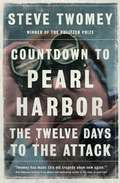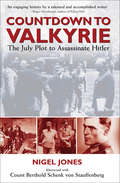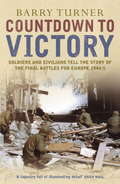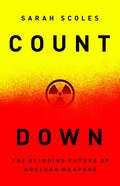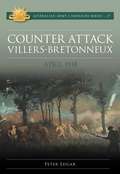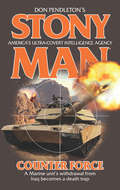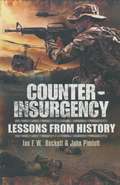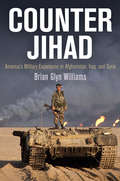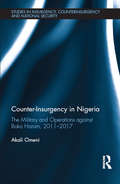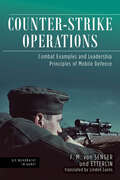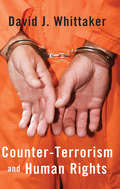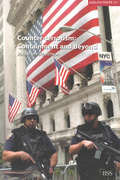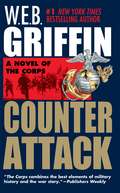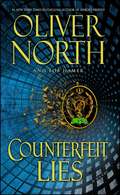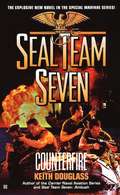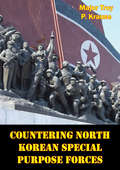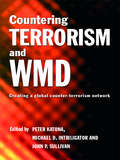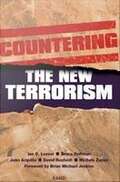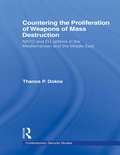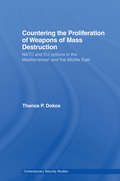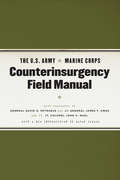- Table View
- List View
Countdown to Pearl Harbor: The Twelve Days to the Attack
by Steve TwomeyA fascinating look at the twelve days leading up to the Japanese attack on Pearl Harbor--the warnings, clues and missteps--by a Pulitzer Prize-winning reporter.In Washington, DC, in late November 1941, admirals compose the most ominous message in Navy history to warn Hawaii of possible danger, but they write it too vaguely. They think precautions are being taken, but never check to see if they are. A key intelligence officer wants more warnings sent, but he is on the losing end of a bureaucratic battle and can't get the message out. American sleuths have pierced Japan's most vital diplomatic code, and Washington believes it has a window on the enemy's soul--but it does not. In a small office at Pearl Harbor, overlooking the battleships at the heart of America's seafaring power, the Commander of the Pacific Fleet tries to figure out how much danger he really faces. His intelligence unit has lost track of Japan's biggest aircraft carriers, but assumes they are resting in a port far away. The admiral thinks Pearl is too shallow for torpedoes, so he never puts up a barrier. As he frets, a Japanese spy is counting the warships in the harbor and reporting to Tokyo. There were false assumptions, and racist ones: The Japanese aren't very good aviators and they don't have the nerve or the skill to attempt a strike so far from their home. There were misunderstandings, conflicting desires, painful choices. And there was a naval officer who, on his very first mission as captain of his very first ship, did exactly the right thing. His warning could have averted disaster, but his superiors reacted too leisurely. Japanese planes arrived moments later. Twomey's telescoping of the twelve days leading to the attack unravels the crucial characters and moments, and produces an edge-of-your seat drama with fascinating details about America at this moment in its history. By the end, the reader understands how assumption is the root of disaster, and how sometimes a gamble pays off.
Countdown to Valkyrie: The July Plot to Assasinate Hitler
by Nigel JonesThere were over forty plots to assassinate Hitler— This is the &“compelling, fast-paced account&” of the one that came closest to succeeding (Publishers Weekly). The July Plot of 1944 was masterminded by Count Claus von Stauffenberg, a member of the German General Staff, who had been rushed back from Africa after losing his left eye and right hand. For his injuries, he had been decorated as a war hero. However, he&’d never been a supporter of Nazi ideology—and he was increasingly attracted by the approaches of the German resistance movement. After an attempt to assassinate Hitler in November 1943 failed, Stauffenberg developed a new plot to kill him at the Wolf&’s Lair, fortified underground bunkers, on July 20, 1944. Besides the führer&’s assassination, Stauffenberg organized plans to take over command of the German forces and sue for peace with the Allies. With the help of photographs, explanatory maps, and diagrams, author Nigel Jones dissects the events leading up to the attempt, the events of the day in minute-by-minute detail, and the aftermath in which the conspirators were hunted down. No other work on the July Plot contains such a full explanation of this attempt on Hitler&’s life—in addition to a forensic analysis of the day, the book includes short biographies of the key characters involved, the first-person recollections of witnesses, and a &“what if&” section explaining the likely outcome of a successful assassination. &“An engaging history by a talented and accomplished writer.&” —Roger Moorhouse, author of Killing Hitler
Countdown to Victory
by Barry TurnerIn standard histories of the Second World War, the last six months in the western European arena invariably make a short epilogue. After the German failure in the Battle of the Bulge, Hitler's bold counter attack across the Ardennes, the war is often assumed to have been all over bar sporadic shooting. This was far from the truth; it was certainly not how those soldiers and civilians at the front saw it. Drawing on American, British, Canadian, German, Dutch and Scandinavian sources, most of them previously unpublished, and starting with the Battle of the Bulge, COUNTDOWN TO VICTORY tells the little known story of those final months through the eyes of ordinary people who had to live the trauma.
Countdown to Victory
by Barry TurnerIn standard histories of the Second World War, the last six months in the western European arena invariably make a short epilogue. After the German failure in the Battle of the Bulge, Hitler's bold counter attack across the Ardennes, the war is often assumed to have been all over bar sporadic shooting. This was far from the truth; it was certainly not how those soldiers and civilians at the front saw it. Drawing on American, British, Canadian, German, Dutch and Scandinavian sources, most of them previously unpublished, and starting with the Battle of the Bulge, COUNTDOWN TO VICTORY tells the little known story of those final months through the eyes of ordinary people who had to live the trauma.
Countdown to Zero Hour
by Nico RossoFans of Maya Banks's KGI series will love this explosive new romantic suspense series from Nico Rosso, featuring black ops agents and the women they'll do anything to protectFormer Special Forces agent Artem "Art" Diaz is tattooed, muscular and undeniably dangerous. He's also deep undercover, posing as mob muscle for a deadly bratva boss. His mission: gain the Russians' trust. Then lead the strike team that will take them down.Chef Hayley Baskov knows better than to get involved with someone with such close mafia ties, but the handsome bodyguard who brought her to this sprawling estate full of ruthless mobsters is inexplicably kind. A little flirtation may keep her safe amid the growing menace. As Art's timetable for action escalates, so do his encounters with Hayley. Stealing what illicit pleasure they can keeps them both sane in the face of evil. But when things get dangerous, Art has to tell her about his assignment, bringing her deeper into the shadowy world of black ops...and putting her life on the line.Now Art has a new objective: protect Hayley from the men who'd see them both dead.Book one of the Black Ops: Automatik series 75,000 words
Countdown: Amy Cornwall Is Patterson's Greatest Character Since Lindsay Boxer
by James Patterson Brendan DuBoisFrom the bestselling author of The President Is Missing, an undercover CIA officer has seven days to save her country—and her family—from the world&’s most dangerous double-agent. Agent Amy Cornwall excels at working from the shadows—until a botched field operation reveals dark dealings between her bosses and an informant. And a hidden plot by a terrorist genius that could kill thousands of Americans. Among them: her husband and daughter. She has to go dark. The Division wants to erase her. And they know every detail about her identity, her history, and her family. Agent Cornwall's countdown has begun.
Countdown: The Blinding Future of Nuclear Weapons
by Sarah ScolesFor fans of Oppenheimer, a riveting investigation into the modern nuclear weapons landscape. Nuclear weapons are, today, as important as they were during the Cold War, and some experts say we could be as close to a nuclear catastrophe now as we were at the height of that conflict. Despite that, conversations about these bombs generally often happen in past tense. In Countdown, science journalist Sarah Scoles uncovers a different atomic reality: the nuclear age&’s present. Drawing from years of on-the-ground reporting at the nation's nuclear weapons labs, Scoles interrogates the idea that having nuclear weapons keeps us safe, deterring attacks and preventing radioactive warfare. She deftly assesses the existing nuclear apparatus in the United States, taking readers beyond the news headlines and policy-speak to reveal the state of nuclear-weapons technology, as well as how people currently working within the U.S. nuclear weapons complex have come to think about these bombs and the idea that someone, someday, might use them. Through a sharp, surprising, and undoubtedly urgent narrative, Scoles brings us out of the Cold War and into the twenty-first century, opening readers' eyes to the true nature of nuclear weapons and their caretakers while also giving us the context necessary to understand the consequences of their existence, for worse and for better, for now and for the future.
Counter Attack Villers-Bretonneux: April 1918 (Australian Army Campaigns #27)
by Peter EdgarThe brutal 1914 German invasion of Belgium and France had gained a large portion of both countries. Over three-and-a-half punishing years the Allies were slowly pushing the Germans back but in March 1918, Germany launched a massive spring offensive. Resting in the Ypres sector after the horrors of the Passchendaele campaign, the Australians were among the first sent south to try to block the enemy. Now, after an unprecedented fortnight of advance, Germany’s goal was to capture the town of Villers-Bretonneux, key to the major rail junction of Amiens. The first attempt on 4 April found the 9th Australian Infantry Brigade in the centre of the line. They stopped the enemy at the gates. Then on 24 April the Germans launched a new attack, led by tanks, and took the town. Standing by to counter-attack were the 15th and 13th brigades of the Australian Corps. Not everything went to plan and casualties were high, but the counter-attack was brilliantly executed in spite of the odds. It became ‘a soldier’s fight’ in which the Australian troops’ morale and eagerness to get to grips with the enemy, together with their aggressive, well-practised moves under fire triumphed. Counter Attack: Villers-Bretonneux – April 1918 details the pivotal role the Australians played in denying German victory. Villers-Bretonneux was never again threatened by the enemy.
Counter Force
by Don PendletonSTONY MAN Very few are aware they exist, but those who do know that each mission Stony Man Farm's commando teams complete means another night of peace in America. They are the best cybertechs and soldiers in the world and their covert goal is to stop terror attacks before they happen-even if it means sacrificing themselves in the process.COUNTER FORCE When Iraqi insurgents detain a regiment of Marines during their attempt to withdraw from Iraq, the international incident incites retribution killings in Montana by a militia of former veterans. For Stony Man Farm's Phoenix Force, it's a race against the clock to rescue the American soldiers in Iraq as Able Team struggles to quell the combat hardened militia in the U.S.-with as little loss of life as possible-before the terrorists kill every single hostage.
Counter Insurgency: Lessons from History
by Ian F. Beckett John PimlottAn international study of counter-insurgency strategies, tactics, and techniques developed in warzones from Vietnam to Latin America and beyond.Insurgencies account for most of the modern world’s armed conflicts. Leading armies across the globe are constantly developing and adjusting counter-insurgency strategies based on experience in the field. Learning from this experience is essential to ongoing peacekeeping effort.Editors Ian Beckett and John Pimlott brought together a team of expert contributors who provided an international overview of counter-insurgency strategies and techniques as they were perceived and put into practice a generation ago. Each chapter considers a different army and describes its reaction to insurgency, its operations in the field and the thinking behind its counter-insurgency strategy. Changes made in strategy and tactics in response to shifting circumstances and new threats are given particular attention.
Counter Jihad: America's Military Experience in Afghanistan, Iraq, and Syria
by Brian Glyn WilliamsCounter Jihad is a sweeping account of America's military campaigns in the Islamic world. Revising our understanding of what was once known as the War on Terror, it provides a retrospective on the extraordinary series of conflicts that saw the United States deploy more than two and a half million men and women to fight in Afghanistan, Iraq, and Syria. Brian Glyn Williams traces these unfolding wars from their origins in the Soviet invasion of Afghanistan through U.S. Central Command's ongoing campaign to "degrade and destroy" the hybrid terrorist group known as ISIS. Williams takes readers on a journey beginning with the 2001 U.S. overthrow of the Taliban, to the toppling of Saddam Hussein, to the unexpected emergence of the notorious ISIS "Caliphate" in the Iraqi lands that the United States once occupied.Counter Jihad is the first history of America's military operations against radical Islamists, from the Taliban-controlled Hindu Kush Mountains of Afghanistan, to the Sunni Triangle of Iraq, to ISIS's headquarters in the deserts of central Syria, giving both generalists and specialists an overview of events that were followed by millions but understood by few. Williams provides the missing historical context for the rise of the terror group ISIS out of the ashes of Saddam Hussein's secular Baathist Iraq, arguing that it is only by carefully exploring the recent past can we understand how this jihadist group came to conquer an area larger than Britain and spread havoc from Syria to Paris to San Bernardino.
Counter-Insurgency in Nigeria: The Military and Operations against Boko Haram, 2011-2017 (Studies in Insurgency, Counterinsurgency and National Security)
by Akali OmeniThis book offers a detailed examination of the counter-insurgency operations undertaken by the Nigerian military against Boko Haram between 2011 and 2017. Based on extensive fieldwork conducted with military units in Nigeria, Counter-Insurgency in Nigeria has two main aims. First, it seeks to provide an understanding of the Nigerian military’s internal role – a role that today, as a result of internal threats, pivots towards counter-insurgency. The book illustrates how organizational culture, historical experience, institutions, and doctrine, are critical to understanding the Nigerian military and its attitudes and actions against the threat of civil disobedience, today and in the past. The second aim of the book is to examine the Nigerian military campaign against Boko Haram insurgents – specifically, plans and operations between June 2011 and April 2017. Within this second theme, emphasis is placed on the idea of battlefield innovation and the reorganization within the Nigerian military since 2013, as the Nigerian Army and Air Force recalibrated themselves for COIN warfare. A certain mystique has surrounded the technicalities of COIN operations by the Army against Boko Haram, and this book aims to disperse that veil of secrecy. Furthermore, the work’s analysis of the air force’s role in counter-insurgency is unprecedented within the literature on military warfare in Nigeria. This book will be of great interest to students of military studies, counter-insurgency, counter-terrorism, African politics and security studies in general.
Counter-Strike Operations: Combat Examples and Leadership Principles of Mobile Defence (Die Wehrmacht im Kampf)
by F. M. von Senger und EtterlinDetailed analysis of WWII operations undertaken by Germany’s armed forces on the Eastern Front, with illustrative case studies, maps, and diagrams. This volume in the Die Wehrmacht im Kampf series offers detailed analysis of a number of operations on the Eastern Front during World War II to draw out universally applicable principles of counter-strike operations and “agile defense.” The combat examples discussed including delaying operations in Southern Ukraine in March 1944; defensive operations Nikopol and Moldau; and counter-strikes undertaken by panzer divisions and panzerkampfgruppen in operations in November 1943 and May 1944. Combat examples are fully described with maps and diagrams, followed by detailed lessons learned and an explanation of consequences of the operation. The author, F.M. von Senger und Etterlin, himself took part in all of the combat operations described as a young officer leading armored troops. He would later go on to hold the rank of four-star general in the Bundeswehr and his final assignment was CINCENT.
Counter-Terrorism and Human Rights
by David J. WhittakerThe ever-present threat of terrorism and the growing human-rights backlash against anti-terrorist policies are becoming ever more significant on the international stage. Constant media-coverage and public concern have characterised the debate over the last ten years.This book is a fair and objective assessment of counter-terrorist policy and human rights worldwide, and covers a wide breadth of international material. While raising key questions for reader consideration, this book aims for straight-forward consideration, leaving polemic to the reader.
Counter-terrorism: Containment and Beyond (Adelphi series)
by Jonathan StevensonThe 9/11 attacks revealed that the transnational terrorist threat facing the US and its partners was far more dangerous than most had previously discerned. It was now clear that al-Qaeda intended to, and could threaten the West’s – particularly the US’ – political and military leverage, with the aim of shifting the balance of power from the West to Islam after a violent global confrontation. In that sense, the new terrorist threat is strategic, and it has led to a worldwide mobilisation comparable to that required by a world war. This Paper argues that prevailing in the ‘war’ on terror, much like victory in the Cold War, entails containment, deterrence, outperformance and engagement. Military power is secondary to intelligence, law enforcement, enlightened social policy and diplomacy. Diplomatic engagement with the larger Muslim world is paramount as a means of denying al-Qaeda not merely recruits but the‘clash of civilisations’ it seeks. The US-led intervention in Iraq, though intended to introduce democratic reform in the wider Middle East, has so far antagonised Islam and strengthened Islamist terrorism. This suggests that coercive or aggressively ideological diplomacy is unlikely to win over an Islamic population biased by anti-Western propaganda. Successful Western diplomacy will have to be discreet, nuanced and incremental.
Counterattack (Corps #3)
by W.E.B. GriffinFrom the devastating surprise attack on Pearl Harbor to America's first bold counterstrike against the Japanese on the beaches of Guadalcanal, this compelling story takes you to the front lines of victory and defeat--and into the very heart of courage, loyalty, and valor. It is a heroic story of pride and passion you will never forget. . . Griffin's books are distinguished by their high action and suspense, his dashing irreverence toward high command, and his clear picture of war and its wartime leaders. " -- THE FLORIDA TIMES-UNION
Counterfeit Lies
by Bob Hamer Oliver NorthThe explosive new thriller from Oliver North, who stormed bestseller lists nationwide with his disarmingly authentic military novel Heroes Proved, is a gripping, non-stop tale that could only be written by someone who has "been there, done that."Veteran undercover FBI agent Jake Kruse is investigating a smuggling ring in southern California when his assignment is cut short. A prominent criminal defense attorney wants to hire Jake on another kind of mission: to kill the daughter of a local crime boss.What began as a "contract killing" soon captures the attention of the CIA, the U.S. Secret Service, and high-level officials in Washington. The undercover agent is plunged into a deadly underworld of North Korean espionage, Hezbollah terror and the sinister deception Iran uses to acquire nuclear weapons. Caught in a web of international intrigue that goes to the top of the U.S. government, Kruse is forced to confront the ultimate moral quandary: doing what's right when everything seems wrong.His New York Times bestseller Heroes Proved was praised by Sean Hannity as "a heart-thumping 'must-read' for every American" and as "inspiring truth in the form of a novel" by U.S. Army Lieutenant General William "Jerry" Boykin, a founding member of Delta Force.Now, national security expert and decorated war hero Oliver North and former U.S. Marine and FBI undercover agent Bob Hamer bring their real-life experience to this pulse-pounding tale of international intrigue and down-to-the-wire suspense. They say it's fiction. But it's all too real.
Counterfire (Seal Team Seven, #16)
by Keith DouglassA group of Palestinian extremists have acquired a nuclear warhead with the capacity to kill three million people. Israel must evacuate all civilians and military personnel from the West Bank and the Gaza Strip, or the bomb will detonate in the middle of London harbor. Seal Team Seven has been called in to answer the threat--with deadly force.
Countering Irregular Activity In Civil War Arkansas - A Case Study
by Colonel C. CollettCivil War Arkansas endured many forms of irregular or guerilla warfare including activity that approached insurgency. It was a complex arena that resembles the present day and it illustrates much of contemporary counterinsurgency doctrine.Arkansas was a Southern state with a significant Unionist population and this divide fueled and shaped much of the conflict. Arkansas was unique in that the Confederate commander seeking to make up for conventional weakness, initiated guerilla warfare directed at Union forces. In response, Union commanders who were merely to protect lines of communication responded with punitive actions against individuals and communities which did little to reduce guerilla activity and served to alienate the local population.As the war progressed, however, guerilla bands shifted from military targets becoming progressively more terrorist, criminal, and once a Unionist state government was installed, insurgent. The Union army's role also changed as the main war moved on from the Mississippi basin and Arkansas became an early field for Lincoln's plan to reincorporate rebel states. The army's emphasis thus shifted to extending Federal authority and its organization and tactics evolved into a successful combination of locally raised troops, intelligence led operations, isolation of the guerillas, and political reconciliation.
Countering North Korean Special Purpose Forces
by Major Troy P. KrauseAs United States and Republic of Korea forces stand to defend against a DPRK attack, one of the most formidable tasks is how to counter a second front in the Joint Rear Security Area of the Republic of Korea.North Korea has a robust and diverse special operations force capability, their 'Special Purpose Forces.' With nearly 104,000 soldiers committed to these daring tactics and operations, the United States and the Republic of Korea must be vigilant and innovative to protect their forces from such attacks.The principal mission of the North Korean Special Purpose Forces is to infiltrate into the enemies rear area and conduct short duration raids. Their most dangerous avenue of approach for their forces includes amphibious approaches, airborne infiltration and the use of a vast tunnel network. How would the North carry out such an attack against such formidable foes? Will they use special operation's type forces to disrupt the South in their rear areas? How would they move their forces into South Korea? What solutions does the United States and the Republic of Korea have to solve this problem and which one is the best?This analysis examines the various methods the United States and the Republic of Korea will use to counter the North Korean Special Purpose Forces today and in the future.
Countering Terrorism and WMD: Creating a Global Counter-Terrorism Network (Political Violence)
by Peter Katona Michael D. Intriligator John P. SullivanThis volume shows us that in order to deal with today’s Fourth Generation asymmetric warfare by terrorist groups using conventional arms and weapons of mass destruction, we need a new ‘global networked’ approach. The contributors examine the various attempts that have been made to counter the latest wave of terrorism, including the US strikes against Afghanistan and Iraq, President George W. Bush's declaration of a ‘war against terrorism’, the creation of the US Department of Homeland Security, and the 9/11 Commission. Drawing from our experience with ‘Terrorism Early Warning’ and the co-production of counter-terrorism intelligence, this book explains the need for such a network and shows how it could be formed. It compiles the opinions of experts from clinical medicine, public policy, law enforcement and the military. These expert contributors identify the nature of a global counter-terrorism network, show how it could be created, and provide clear guidelines for gauging its future effectiveness. This book will be of great interest to all students of terrorism studies, US national security, international relations, and political science in general.
Countering the New Terrorism
by John Arquilla Bruce Hoffman Michele Zanini Ian Lesser David F. RonfeldtTraces the recent evolution of international terrorism against civilian and U.S. military targets, looks ahead to where terrorism is going, and assesses how it might be contained. The authors consider the threat of information-based terrorism and of weapons of mass destruction, with an emphasis on how changes in the sources and nature of terrorism may affect the use of unconventional terror. The authors propose counterterrorism strategies that address the growing problem of homeland defense.
Countering the Proliferation of Weapons of Mass Destruction: NATO and EU Options in the Mediterranean and the Middle East (Contemporary Security Studies)
by Thanos P DokosAs counter-profileration is expected to become the central element in the new national security policy of the US, such actions will constitute a central element of every major international conflict in the first decades of the 21st century. One of the most important geostrategic phenomena of the past decade has been the extraordinary diffusion of war-making capabilities from the developed North to the developing South. In the eyes of some proliferant states, possessing nuclear, biological and chemical (NBC) weapons would not only add to their regional stature, but would also offer an asymmetrical counter to the West’s massive superiority in conventional forces. In the Eastern Mediterranean and the Middle East, a number of countries are assumed to possess varying levels of NBC-weapons capabilities. Reasons for concern include the fact that such weapons have been used in the past; the region’s geographic proximity to Europe and the vital interests of the West (which is prepared, under certain circumstances, to use force to protect them); the multiplicity of conflicts and other security problems; and the general instability in the region (including the spread of religious extremism).This important and timely book assesses, in detail, the accuracy of predictions, and perceptions, about a possible military threat from the Southern Mediterranean (Muslim) world; and their impact on NATO’s political and military posture. Thanos P. Doxos presents an assessment of the Alliance’s options for dealing with the problem. This book represents an invaluable, topical resource for researchers and policy makers.
Countering the Proliferation of Weapons of Mass Destruction: NATO and EU Options in the Mediterranean and the Middle East (Contemporary Security Studies)
by Thanos P. DokosAs counter-profileration is expected to become the central element in the new national security policy of the US, such actions will constitute a central element of every major international conflict in the first decades of the 21st century. One of the most important geostrategic phenomena of the past decade has been the extraordinary diffusion of w
Counterinsurgency Field Manual
by The U.S. Army Marine CorpsWhen the U.S. military invaded Iraq, it lacked a common understanding of the problems inherent in counterinsurgency campaigns. It had neither studied them, nor developed doctrine and tactics to deal with them. It is fair to say that in 2003, most Army officers knew more about the U.S. Civil War than they did about counterinsurgency.The U.S. Army / Marine Corps Counterinsurgency Field Manual was written to fill that void. The result of unprecedented collaboration among top U.S. military experts, scholars, and practitioners in the field, the manual espouses an approach to combat that emphasizes constant adaptation and learning, the importance of decentralized decision-making, the need to understand local politics and customs, and the key role of intelligence in winning the support of the population. The manual also emphasizes the paradoxical and often counterintuitive nature of counterinsurgency operations: sometimes the more you protect your forces, the less secure you are; sometimes the more force you use, the less effective it is; sometimes doing nothing is the best reaction. An new introduction by Sarah Sewall, director of the Carr Center for Human Rights Policy at Harvard’s Kennedy School of Government, places the manual in critical and historical perspective, explaining the significance and potential impact of this revolutionary challenge to conventional U.S. military doctrine. An attempt by our military to redefine itself in the aftermath of 9/11 and the new world of international terrorism, The U.S. Army / Marine Corps Counterinsurgency Field Manual will play a vital role in American military campaigns for years to come. The University of Chicago Press will donate a portion of the proceeds from this book to the Fisher House Foundation, a private-public partnership that supports the families of America’s injured servicemen. To learn more about the Fisher House Foundation, visit www.fisherhouse.org.
